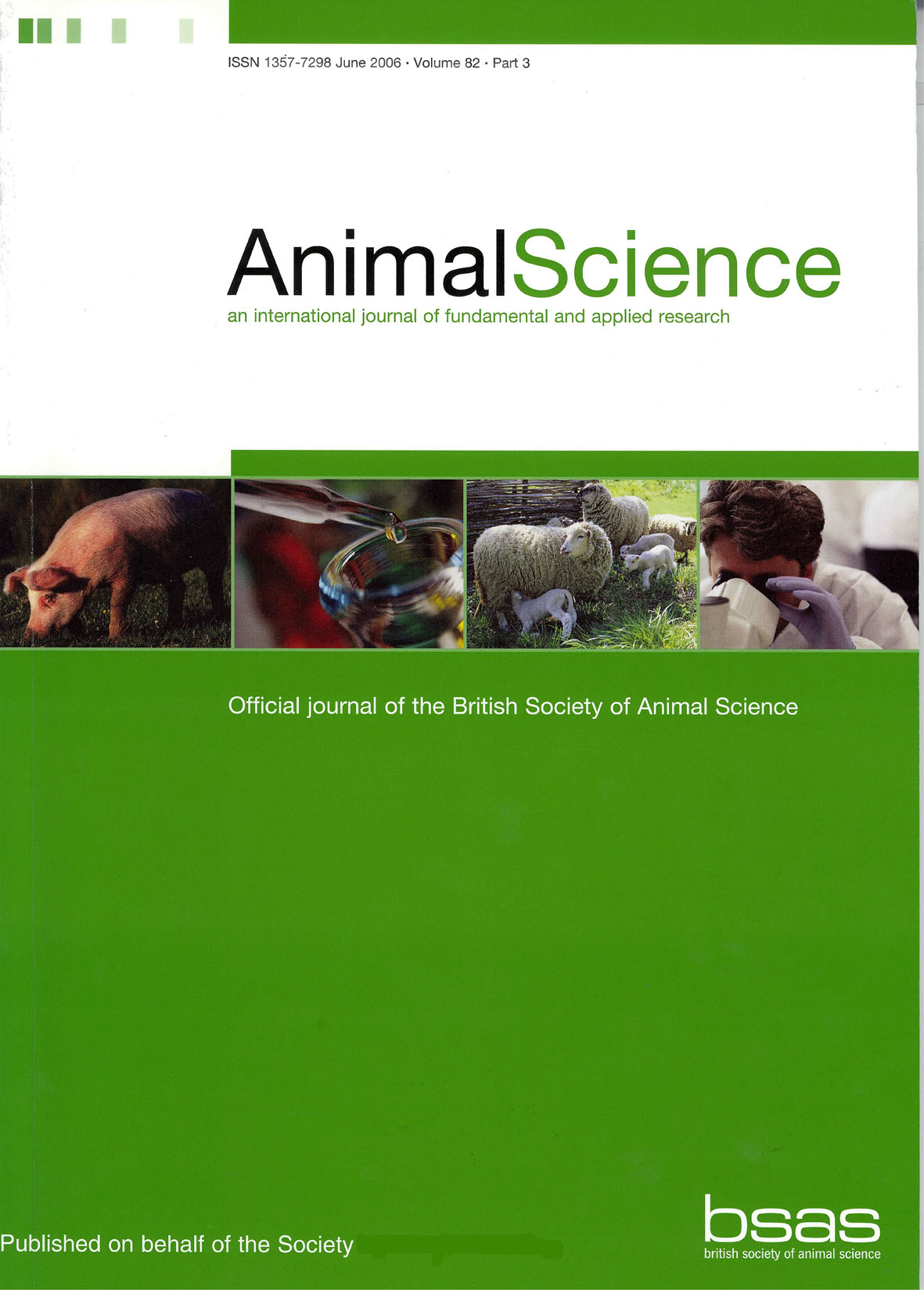Article contents
Calves sucking colostrum and milk from their dams or from an automatic feeding station starting in the neonatal period: metabolic and endocrine traits and growth performance
Published online by Cambridge University Press: 18 August 2016
Abstract
Metabolic and endocrine traits and growth performance from birth up to day 28 in calves sucking colostrum and milk at a computer-programmed automatic feeding station (GrA, no. = 7) were compared with calves sucking their dams (GrS, no. = 7). Body weight tended to be higher on day 28 in GrS than in GrA (74 (s.e. 4) and 70 (s.e. 2) kg, respectively; P 0·1), but not weight gain from 0 to 28 days. Intakes in GrA increased from days 1 to 4 and then remained at 11·1 (s.e. 1·0) l/day. From days 2 to 11 calves visited the automatic feeding station 9 (s.e. 1) times per day. Plasma concentrations of urea (days 3 and 21), glucagon (day 3) and growth hormone (day 3) were higher in GrA than in GrS (P < 0·05), whereas plasma concentrations of total protein (days 1 to 28), immunoglobulin G (days 1 to 28), albumin (days 1 to 14), glucose (day 3), lactate (days 1 and 28), triglycerides (day 3), cholesterol (days 21 and 28), insulin (day 3), and insulin-like growth factor-1 (day 21) were lower in GrA than in GrS (P < 0·05). Metabolic and endocrine group differences were mainly seen in week 1. However, growth performance during the first 3 weeks of life was comparable in calves of the two groups but resulted in slightly enhanced body weight (by 4 ± 3·5 kg) at the end of the 1st month of life in GrS.
- Type
- Growth, development and meat science
- Information
- Copyright
- Copyright © British Society of Animal Science 2002
References
- 13
- Cited by


